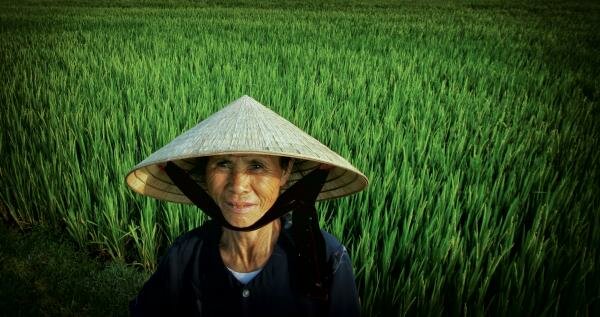Shrimp and Ginger the New Bread and Butter for Mekong Farmers
Farmers in Vietnam’s Mekong Delta adapt to rising sea levels and saltwater intrusion with simple farming fixes.
 Rising sea levels and saltwater intrusion in Vietnam’s fertile Mekong Delta are forcing farmers and development agencies to rethink how livelihoods can be maintained, using methods such as genetic modification, new crop varieties and simple farming fixes.
Rising sea levels and saltwater intrusion in Vietnam’s fertile Mekong Delta are forcing farmers and development agencies to rethink how livelihoods can be maintained, using methods such as genetic modification, new crop varieties and simple farming fixes.
With support from the Australian Centre for International Agricultural Research, the International Rice Research Institute (IRRI) in March 2011 launched a four-year project to introduce the flood-tolerant SUB1 gene and Saltol, a salt-tolerant gene, to Vietnamese rice varieties.
Transferring the genetic information - a process known as introgression - is expected to take three years. Because the genes are being introduced to rice currently grown in Vietnam, farmers will not need to learn new farming practices.
“We are on track. It’s three years, and in the fourth year, we’ll try to disseminate this new variety,” said Reiner Wassmann, a climate change specialist with the International Rice Research Institute (IRRI).
The Mekong Delta is the country’s rice basket, and Vietnam is the world’s second largest rice exporter. With soil and crops already being damaged by saltwater intrusion, farmers and development agencies are troubleshooting ways to cope.
Some rice paddies in Thanh Hoa Province have been converted to shrimp ponds, according to Nguyen Viet Nghi, CARE’s project manager of a community-based mangrove reforestation programme in Thanh Hoa.
“It was done by farmers themselves, and CARE is planning to support them combine mangroves and shrimp development in their ponds,” said Nghi.
It is a trend seen across Vietnam: aquaculture has skyrocketed from 641,900 hectares in 2000 to more than 1 million hectares in 2010, and shrimp farming accounts for the bulk of the growth, nearly doubling over the past decade to 645,000 hectares.
While most aquaculture is in the Mekong Delta, even in Thanh Hoa on the central coast, farming in water grew from 10,600 hectares in 2000 to 13,900 a decade later.
 Vietnam is one of the countries expected to suffer most from the impact of climate change, and unpredictable rain, higher temperatures and more saltwater could mean less water for irrigation of crops such as watermelons.
Vietnam is one of the countries expected to suffer most from the impact of climate change, and unpredictable rain, higher temperatures and more saltwater could mean less water for irrigation of crops such as watermelons.
Oxfam piloted a small project to help 10 farmers with hardier varieties of watermelons, and taught them simple methods to save water: Draping plastic sheets on the ground around the plants prevents evaporation, so farmers need less freshwater for the crops. To prevent saltwater contamination, farmers built raised beds half a metre above the salinated drainage ditches.
“We found that out of 10 [farms], nine have huge profits because production is very good,” said Provash Chandra Mondal, humanitarian programme coordinator for Oxfam in Vietnam. Oxfam is now replicating the watermelon project on other small farms, and experimenting with ginger cultivation.
The only solution
Longer droughts and rising sea levels have begun to salinate farmland, and the only solution is to adapt, according to Oxfam.
“It’s like a slow poisoning, and now it’s increasing, moving up the rivers,” Mondal said. “It has a long-term impact, and there’s no solution. Nobody can stop the saline water, but we just have to adapt.”
During the 2010 drought, saltwater from the South China Sea contaminated communities 60km inland compared with 30km in years past.
If sea levels rise by one metre - the low end of climate scientists’ projections of a one- to two-metre rise by 2100 - an estimated 1.7 million hectares would be inundated, or 5.3 percent of Vietnam’s land area. Most of this threatened land (82 percent) is in the Mekong Delta, where millions of people would be displaced.
By 2030, rising sea levels could cause rice productivity to drop by 9 percent, according to the UN Development Programme.
“We expect a lot of changes in the hydrology in all parts of the Mekong Delta,” said Wassmann, adding that the highly productive delta is vulnerable to tiny changes in the weather.
“If you come to the Mekong Delta, you’ll see every square metre of land is used... It is very intensively used, and it is very much dependent on a relatively stable set of parameters. If we change this system there, all of this success from the fine-tuning becomes useless... If this kind of source of rice for the world market is going down, then it will have major repercussions for the rice market as a whole.”
This article was first published in IRIN.

















